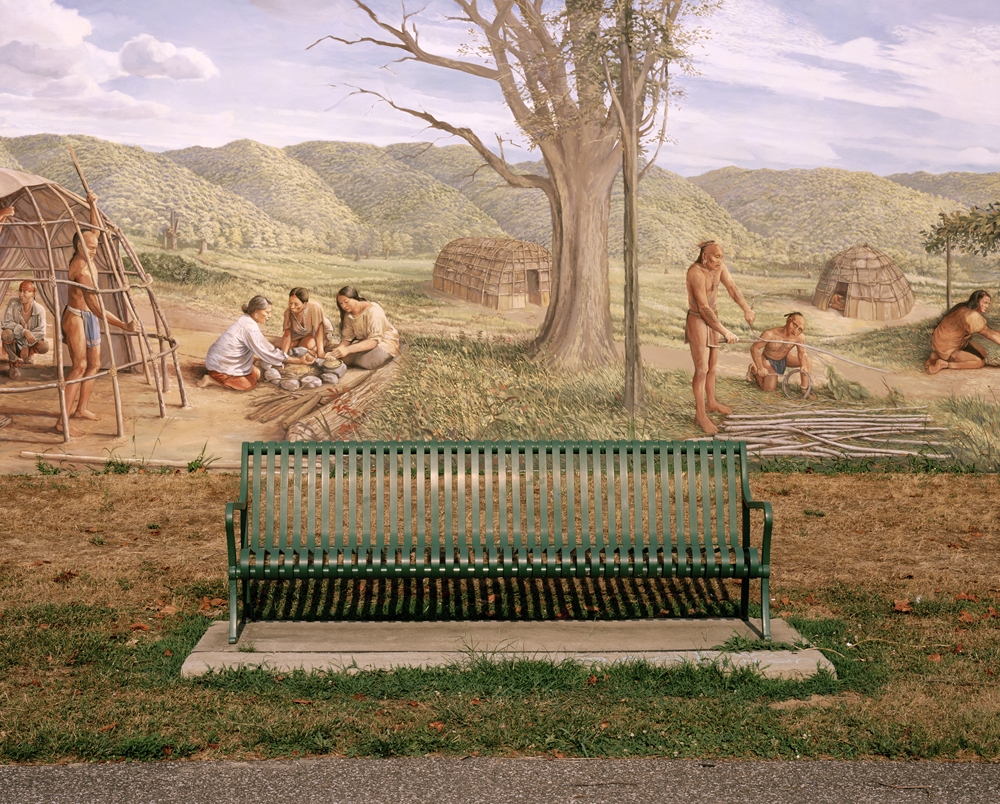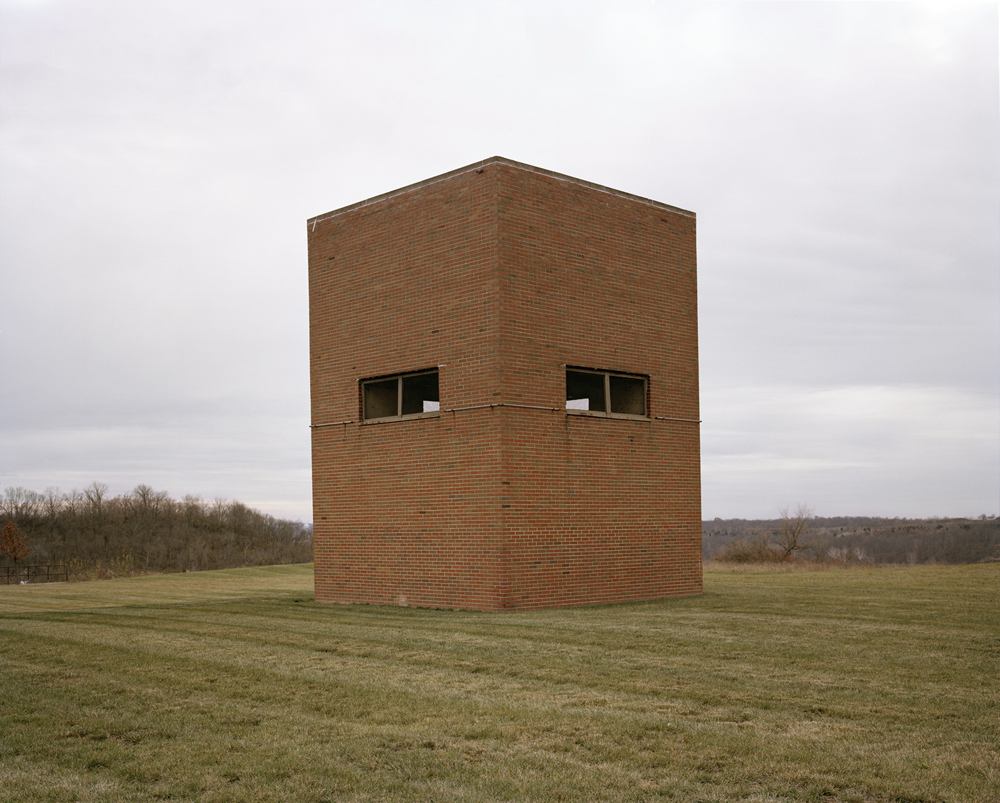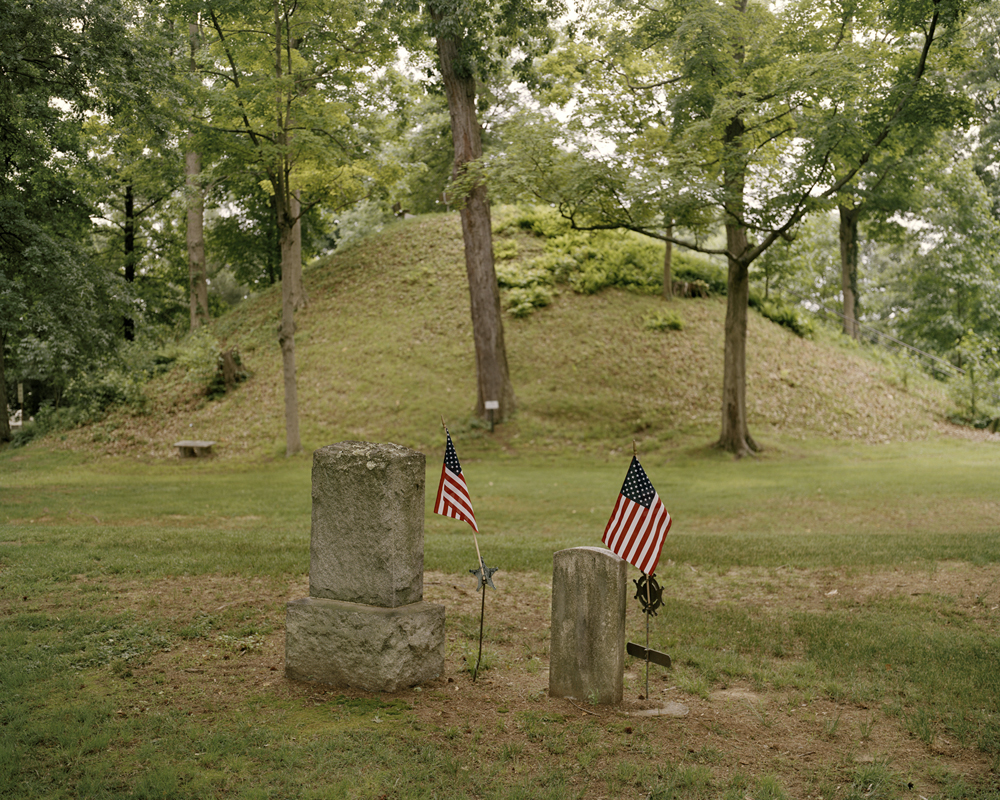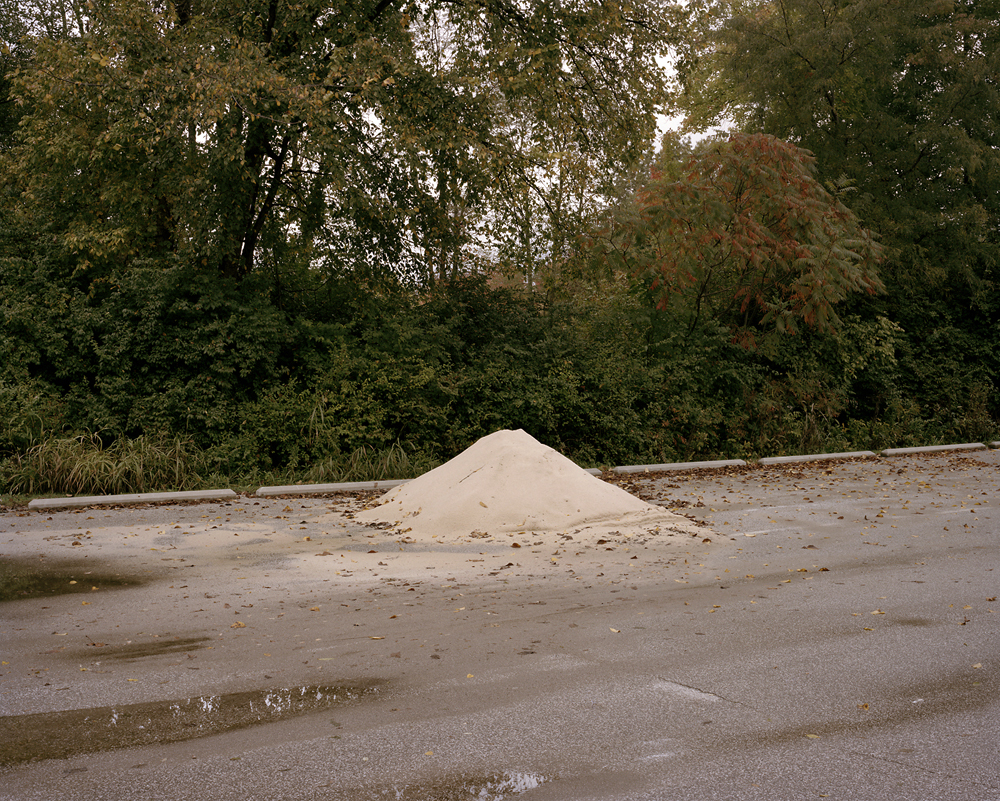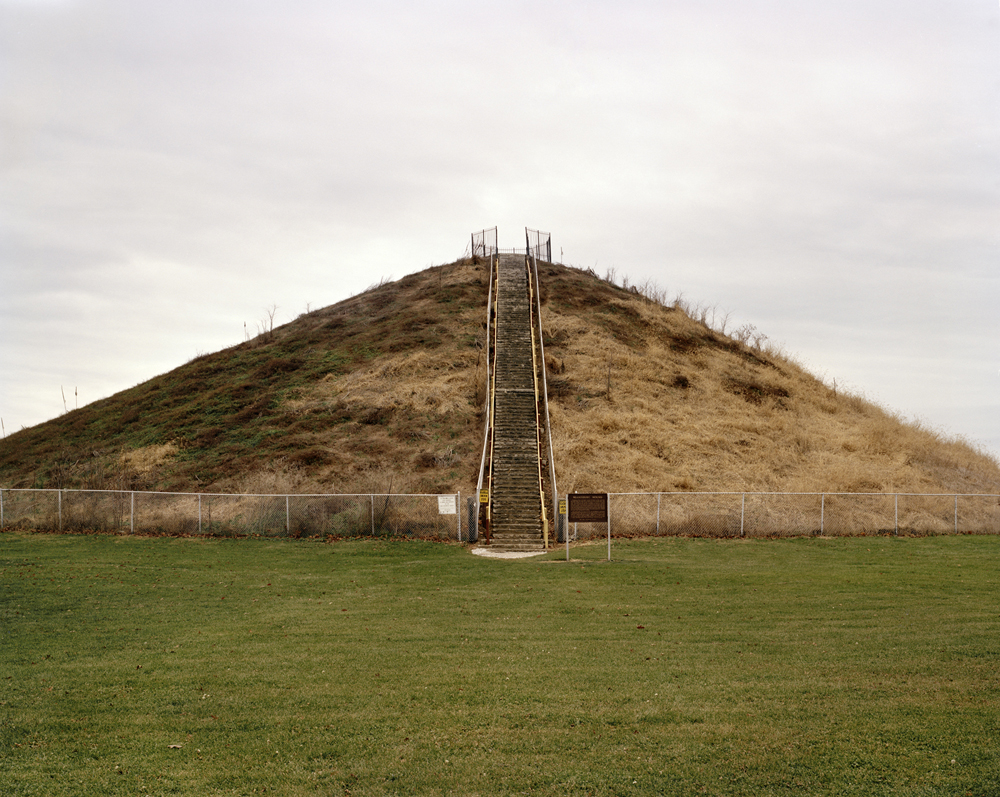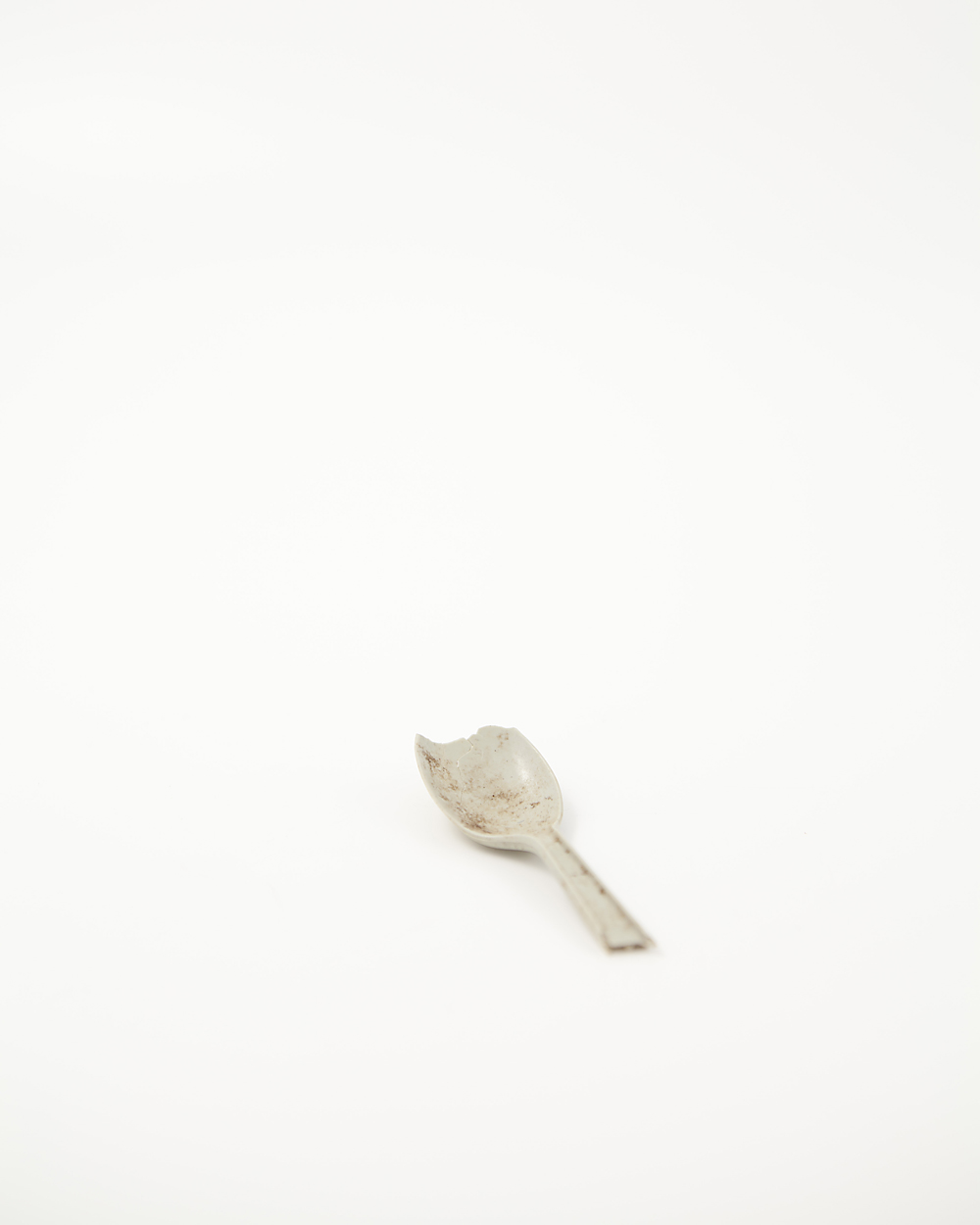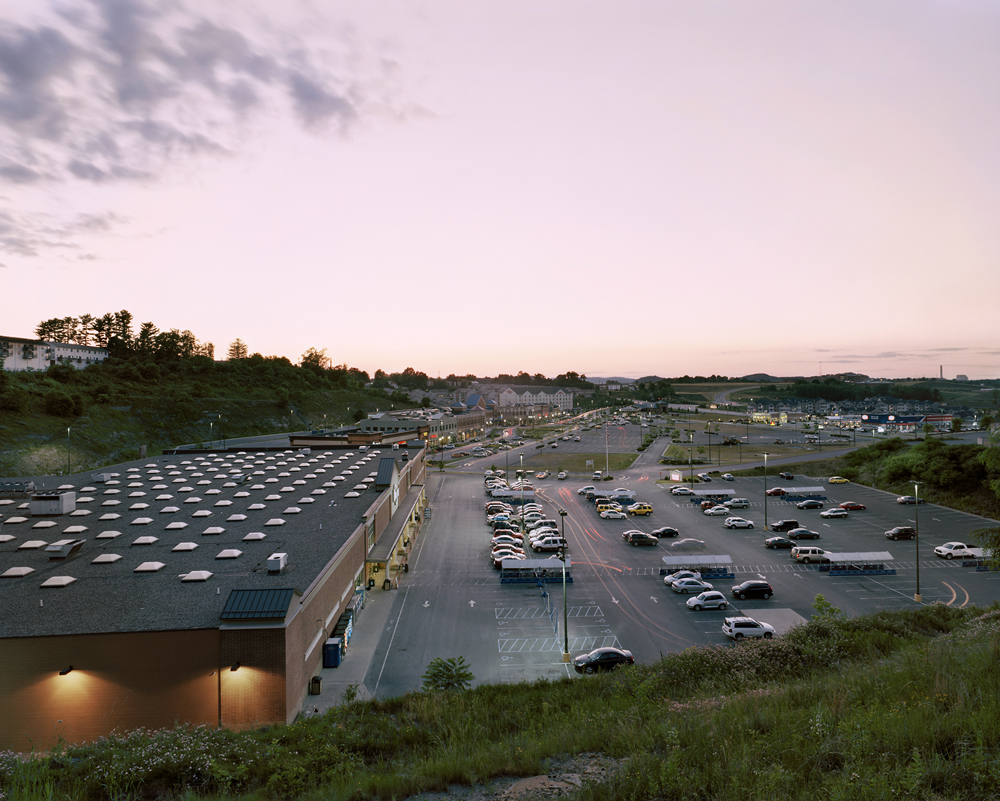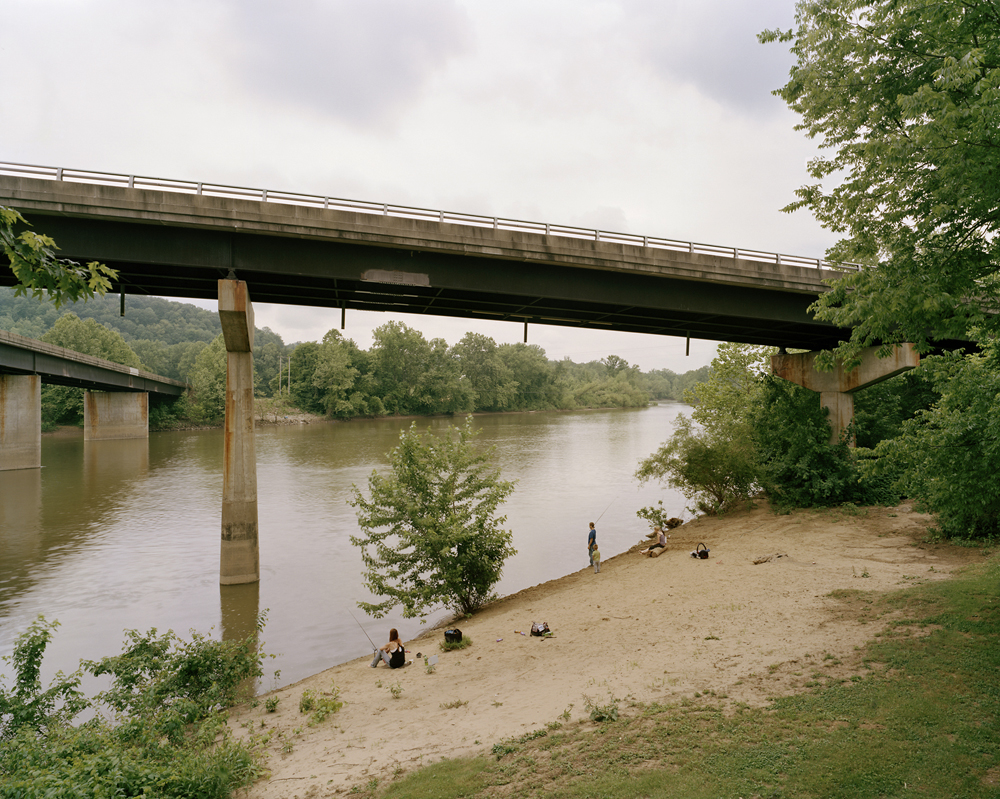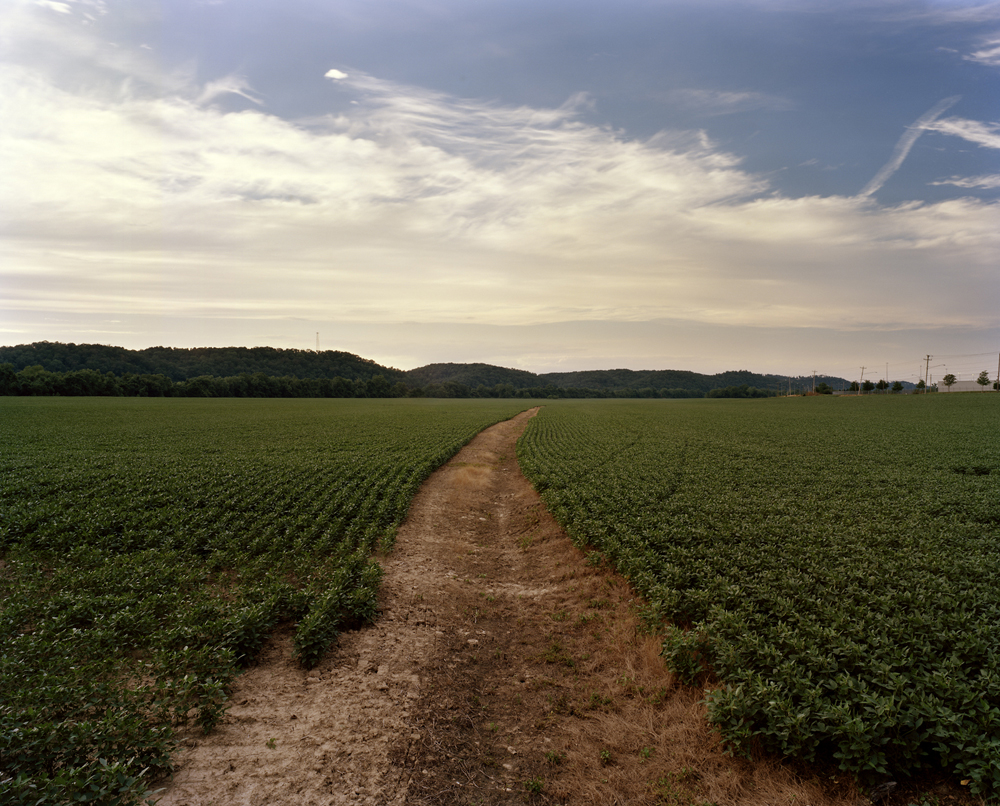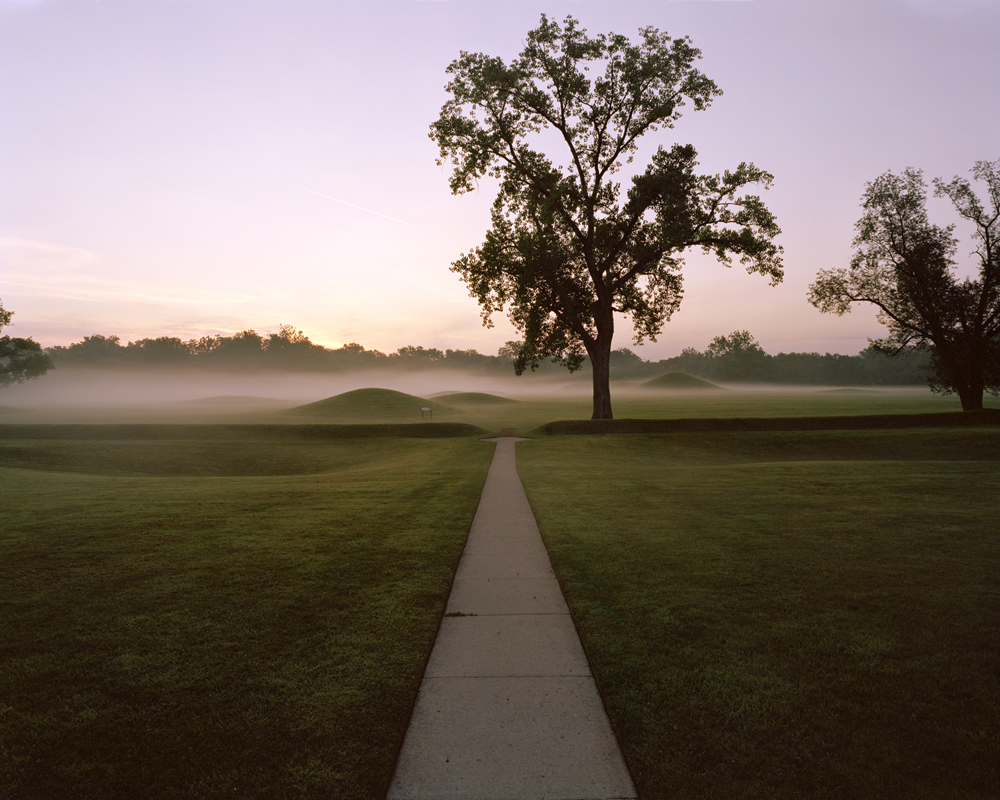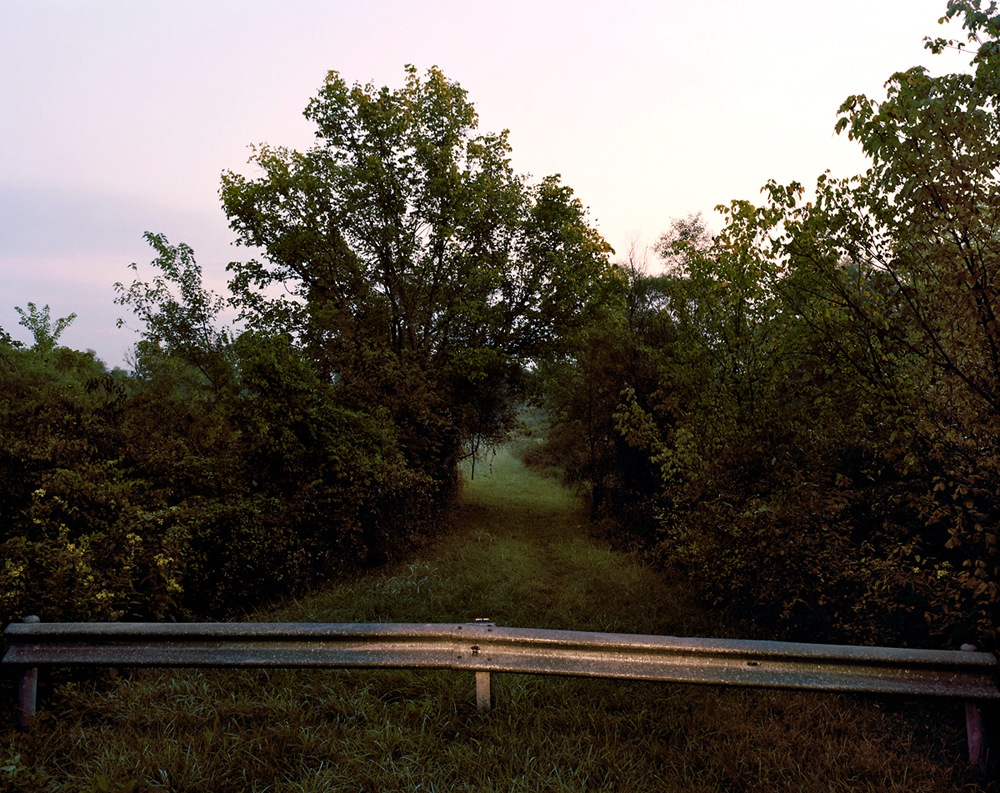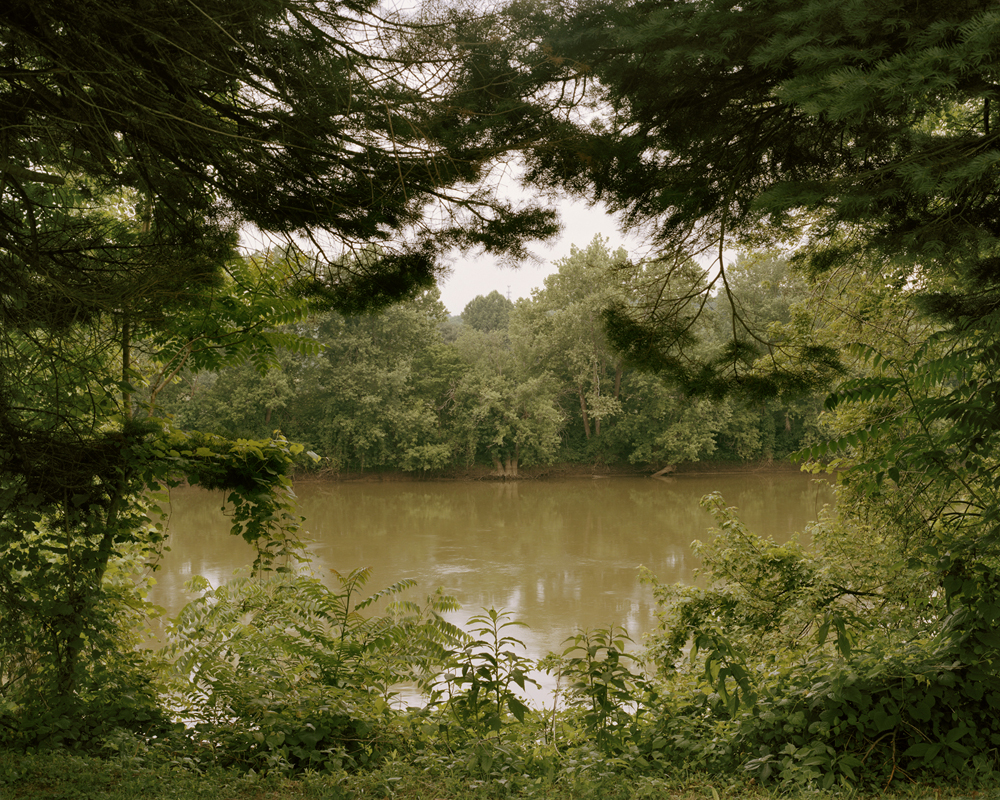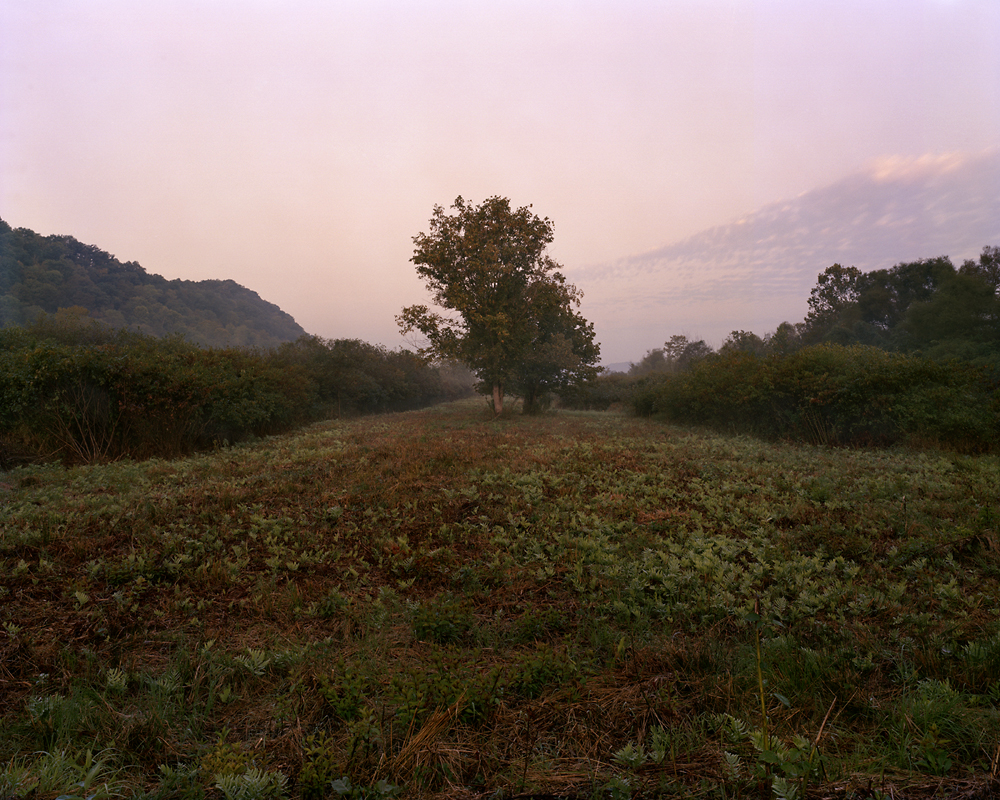Since 2011, Michael Sherwin has been photographing significant sites of Native American history in Ohio, Tennessee and West Virginia in his ongoing series “Vanishing Points.” The photographs depict the historical significance of the contemporary American Landscape, in an attempt to reconcile the relationship between their present day banalities and their tumultuous, often forgotten past.
Sherwin’s photographs are generally unsentimental, large format color landscapes -- their subdued colors and deadpan framing highlight the the murkiness of their histories. In one image, an anonymous building sits in a non-descript field in Miamisburg, Ohio – its function looming and pointless, a near testament to non-existence. In another image, “Conus Mound, Mound Cemetery, Marietta, OH” Sherwin presents two small American gravestones from behind – obscuring their identities as empty monuments. In the background of this image, and constant throughout this body of work is an “Indian mound” – large grass covered hills that existed throughout the region that were built between 800 BC and 500 AD primarily by the Adena and Hopewell cultures. Their presence in Sherwin’s photographs serve both as chapter markers and one of the few traces of the cultures that once occupied the space.
“For some reason," Sherwin tells us, " I began shooting each mound straight on, placing it in the center of the composition I've also made a few photographs of modern "mounds", or piles of sand, coal, gravel, etc. that resemble the ancient mound like form. I like the irony of these simple structures, especially when they exist on the grounds of an actual Native site.”
Sherwin parallels these landscapes with a project called “Artifacts,” a series of studio-lit typologies of debris found at the various sites. While the objects are almost all contemporary: garbage, matchbox cars, liquor bottles, and plastic flowers – they serve as implied relics to each space’s mysterious past. “No matter how mundane,” says Sherwin, “they all hold a certain mystery and a story, not unlike ancient artifacts in a museum vitrine….I wanted the pictures to be as straightforward and clinical as possible to mimic archaeological findings.”
Sherwin was initially inspired by a battle over the development of commercial real estate on a 2,000 year old sacred Native American burial ground in Morgantown, WV, only a mile from his house. The land ultimately became Suncrest Towne Center, which troubled him and drove him to pursue the project. Sherwin tells us: “I am fascinated by this simultaneous presence and absence in the landscape, the seen and unseen. I am also interested in the apparent disparity between Western and Native views of the sanctity of the land.”
As he began doing research for the project, the reality of his own Irish-German ancestry and its ties to ideas of Manifest Destiny became additionally troubling and motivating. “In a way,” says Sherwin, “this series is an attempt to grapple with this legacy and to connect to a previous cultural understanding of the land and spirituality that I more closely identify with.”
While many of the images appear to have a cold ambiguity, they come from a place of deep sadness. Soybean Field, Buffalo, WV, for example, depicts a native burial site that was converted into soybean fields and a large Toyota development. One of the historians Sherwin met with described a painful dream she had about the place, inspiring him to photograph it.
“The night after she visited the site,” says Sherwin “she dreamed of Native elders rising from their graves and walking through the fields. They were crying, and she felt like they were trying to speak to her. She told me this while choking back tears. I visited the same site a few months later with her story still haunting me. I made a photograph around sundown from the roof of my rental car in the middle of a soybean field, then sat for a while and listened quietly.”
Bio: Michael Sherwin earned a MFA from the University of Oregon in 2004, and a BFA from The Ohio State University in 1999. Currently, he is an Associate Professor of Photography and Intermedia in the School of Art and Design at West Virginia University.

